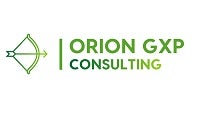When operating within GxP-regulated environments, maintaining a state of inspection readiness is not just a good practice—it’s a regulatory expectation. Whether applying for a manufacturing and importation authorisation (MIA) or submitting a variation to an existing license, regulatory delays or outright refusals are often the result of poor preparation and lack of genuine operational readiness.
The Reality of ‘Readiness’
Too often, applications are based on future aspirations rather than current, demonstrable capabilities. Regulatory authorities assess the present state of a facility—not where it hopes to be in six months’ time. Common pitfalls include:
- Incomplete application dossiers
- Sites not physically or operationally ready
- Key personnel lacking site-specific experience
- Documentation and training that are not up to date or aligned with expectations
Declaring inspection readiness to a health authority is a serious step. It must be underpinned by a functioning pharmaceutical quality system (PQS) that integrates good manufacturing practices (GMP) and quality risk management (QRM).
What does inspection readiness look like?
Before declaring readiness, ensure the following are in place:
- Premises are completed, qualified, and fit for their intended use
- Batch records and validation reports are finalised and available
- Analytical methods are verified and documented
- All outsourced activities are covered by approved quality technical agreements (QTAs)
- A self-inspection program is in place and active
- Personnel are trained, competent, and familiar with site-specific procedures
- All training records are documented and accessible
Applications, particularly new MIA applications, may take around 90 days to process—but don’t be lulled into a false sense of preparation time. Inspections can occur with minimal notice, even as soon as the following week. You do not have 90 days to prepare—you need to be ready before submission.
Understanding the inspection process
The inspection assesses whether your site, systems, and staff can assure the quality, safety, and efficacy of medicinal products. Key focus areas include:
- Personnel competence
- Suitability of premises
- Quality systems and procedures
- Batch documentation and traceability
- Validation and verification activities
- Outsourced operations and vendor controls
Pre-inspection, you’ll be asked to provide several documents, such as:
- Site master file (SMF)
- Pre-inspection compliance report
- Lists of standard operating procedures (SOPs)
- Deviations; out of specification (OOS) or out of trend (OOT); corrective and preventative actions (CAPA); complaints; and change control logs
These allow inspectors to identify areas of focus for both remote and on-site inspections.
Conduct of the inspection
A typical inspection unfolds in the following stages:
- Pre-inspection preparation – Document submission and preliminary review
- Opening meeting – Review of scope, key personnel introductions
- On-site walkthrough – Physical inspection of facilities and processes
- Document review and SME interviews – Assessing how well the systems function in reality
- Closing meeting – Inspectors clarify observations (this is not the time to debate findings)
Major or critical findings will be escalated into the Inspection Action Group (IAG) or enforcement officers; in less severe cases, a statement of non-conformance and compliance monitoring may follow. In all cases, license holders are expected to provide a robust, realistic action plan addressing any deficiencies raised.
Practical tips for inspection readiness
- Review past inspection reports and ensure all corrective actions have documented evidence of closure
- Ensure key SMEs are available and prepared to speak to their areas of responsibility
- Pre-walk inspection routes and ensure facility tidiness—this includes desk areas (beware of post it notes with passwords!)
- Keep documentation organised and accessible
- Limit personnel on the inspection tour—only essential staff should accompany the inspector
Inspection readiness is not a one-time activity but a state of continuous preparedness. Don’t gamble your license on assumptions or incomplete systems. Be proactive, be thorough and, above all, be honest about where your site really stands.

